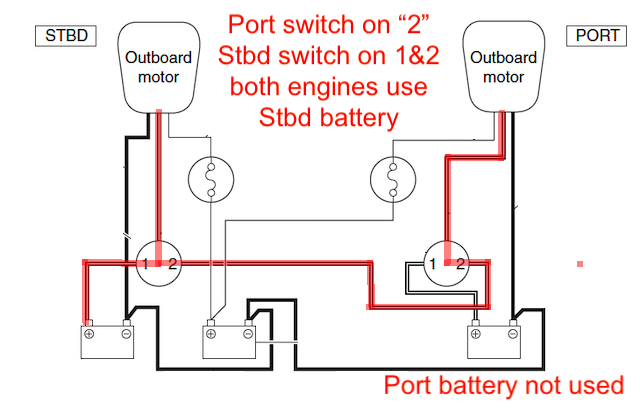Originally posted by whistler12
View Post
- each engine to use its own battery only
- both engines to use either battery 'together'
- both engines to use both batteries 'together' (thus no need for an "emergency parallel" switch)




Comment